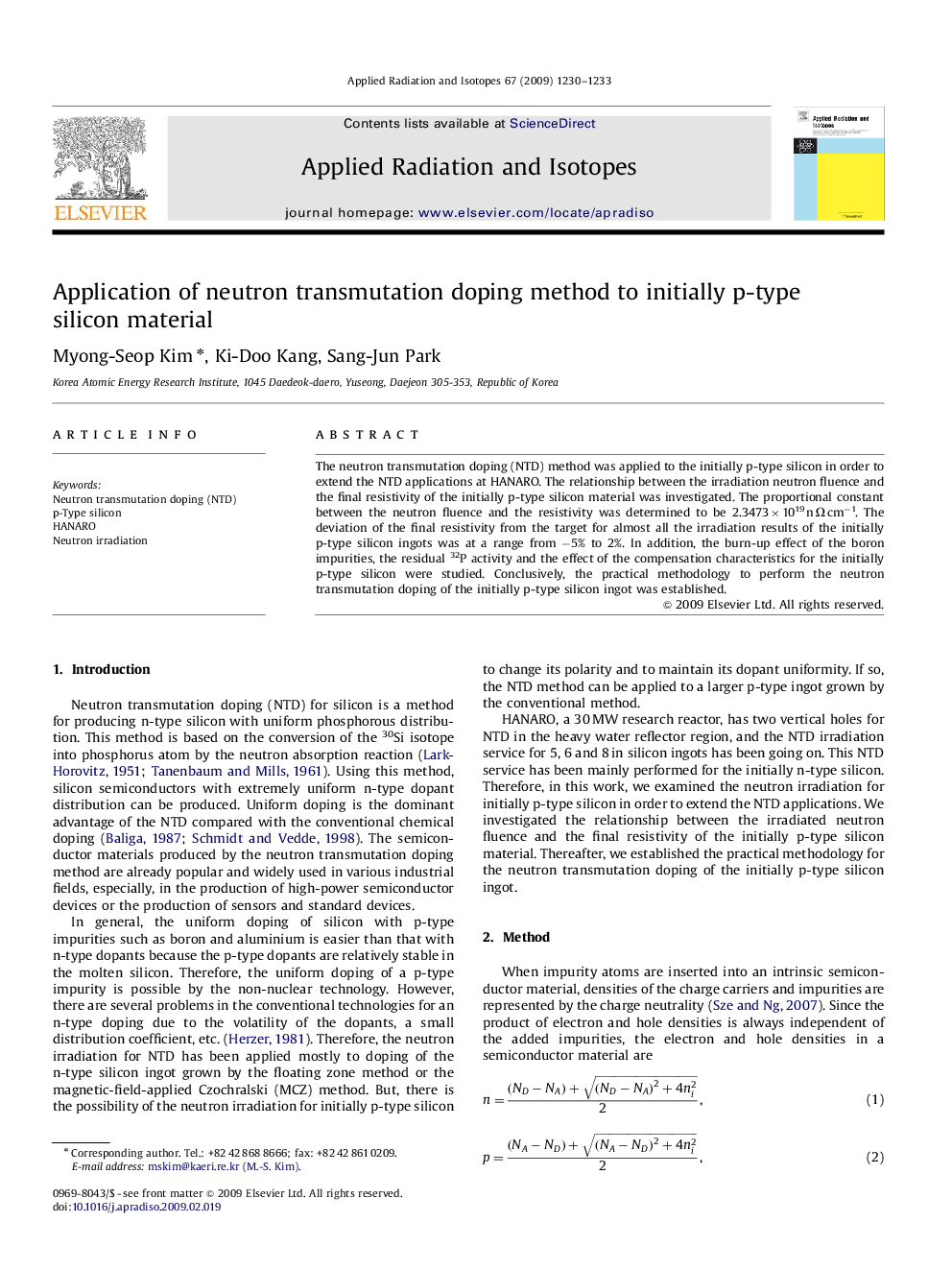| Article ID | Journal | Published Year | Pages | File Type |
|---|---|---|---|---|
| 1878145 | Applied Radiation and Isotopes | 2009 | 4 Pages |
The neutron transmutation doping (NTD) method was applied to the initially p-type silicon in order to extend the NTD applications at HANARO. The relationship between the irradiation neutron fluence and the final resistivity of the initially p-type silicon material was investigated. The proportional constant between the neutron fluence and the resistivity was determined to be 2.3473×1019 n Ω cm−1. The deviation of the final resistivity from the target for almost all the irradiation results of the initially p-type silicon ingots was at a range from −5% to 2%. In addition, the burn-up effect of the boron impurities, the residual 32P activity and the effect of the compensation characteristics for the initially p-type silicon were studied. Conclusively, the practical methodology to perform the neutron transmutation doping of the initially p-type silicon ingot was established.
